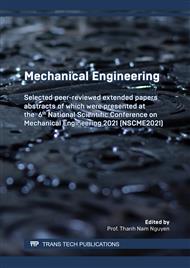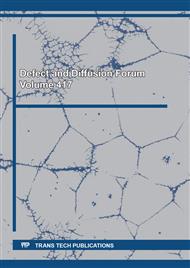p.23
p.29
p.35
p.45
p.51
p.61
p.67
p.73
p.81
Research on Feeding System of Open-Source-FDM Printers to Improve the Quality of 3D Printed Products from Flexible Materials
Abstract:
FDM (Fused Deposition Modeling) technology, with outstanding advantages, has been increasingly applied in the fields of processing and manufacturing industry - a field with high demand for product quality. Feed system and technology parameters are one of the important factors directly affecting the product quality of FDM technology in particular and material extruding technology in general, especially when using soft, flexible materials such as TPU (Thermoplastic polyurethanes) and PVA (Polyvinyl Alcohol). The purpose of this paper is to study the optimization of technology parameters for open source 3D printers to improve product quality of accuracy, surface roughness and shorten fabrication time when using these materials. Through the experimental process, on the self-designed and fabricated feeding cluster, the authors have identified the optimal set of parameters for the set goal. The team's next research direction is to continue to expand the material used, improving the mechanical durability of the product.
Info:
Periodical:
Pages:
51-59
Citation:
Online since:
June 2022
Authors:
Keywords:
Price:
Сopyright:
© 2022 Trans Tech Publications Ltd. All Rights Reserved
Share:
Citation:



